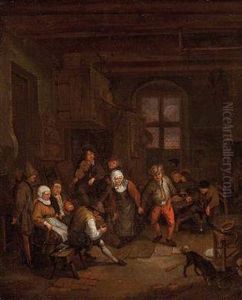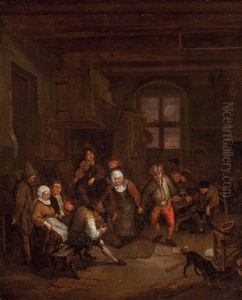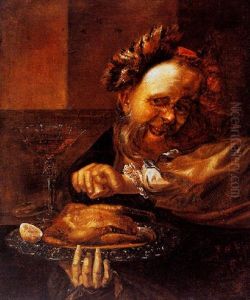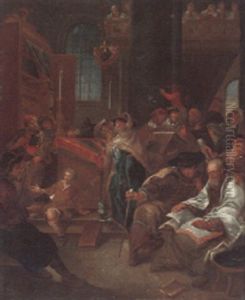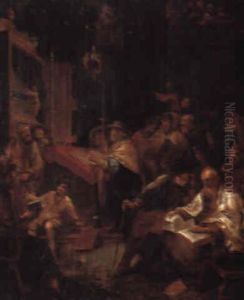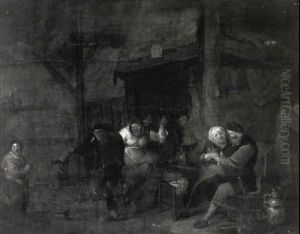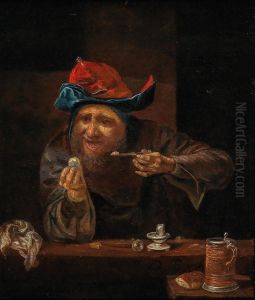Daniel Boone Paintings
Daniel Boone is not an artist in the traditional sense of painters or sculptors, but rather a legendary American pioneer, explorer, woodsman, and frontiersman, whose frontier exploits made him one of the first folk heroes of the United States. Boone was born on November 2, 1734, in a log cabin in Berks County, Pennsylvania, into a family of Quakers. He is most famous for his exploration and settlement of what is now Kentucky, which was then beyond the western borders of the settled colonies. Despite Boone's fame as an explorer and hunter, his contributions to American culture and expansion westward capture a pioneering spirit that has been celebrated in art, literature, and folklore.
From a young age, Boone was skilled in hunting and navigating the dense forests of the American frontier, which would serve him well in his later explorations. In 1767, he first reached Kentucky, and by 1775, he played a significant role in the establishment of Boonesborough, one of the first American settlements west of the Appalachians, after blazing the Wilderness Road through the Cumberland Gap. His adventures, including his capture by Shawnee warriors and his daring escape, were widely publicized and contributed to his legendary status.
Boone's life was not without its hardships. He faced financial difficulties, legal battles over land claims, and the loss of several family members to Native American attacks. Despite these challenges, Boone's love for the vast wilderness and his contributions to its settlement left a lasting legacy. He became a symbol of the American frontier spirit, embodying themes of exploration, adventure, and the challenges of taming the wild. Daniel Boone died on September 26, 1820, in Missouri, but his legacy endures through numerous cultural representations, from literature and statues to television and film, making him an enduring figure in American heritage.

